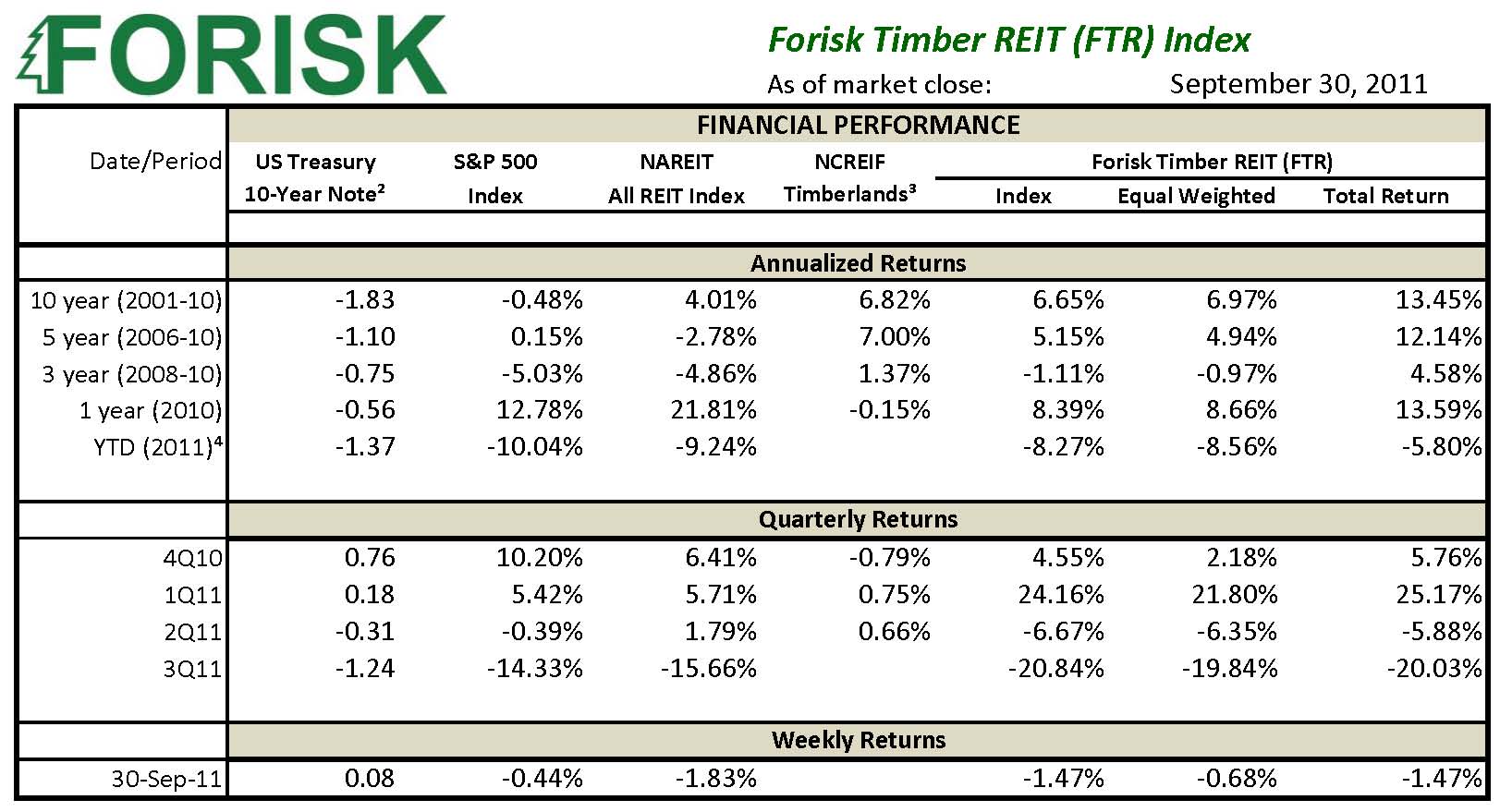While publicly-traded timberland-owning REITs, and REITs generally, outperformed the S&P 500 over 10-year, 3-year and 1-year benchmarks (see table), the sector took a shellacking during the third quarter of 2011. The Wall Street Journal profiled the “dethroning” of REITs as investors fled from concerns about the global economy (“Investors check out of real-estate stocks”, October 5, 2011). Within the REIT space, REITs that manage hotels and industrial space fell 32% and 24% during the quarter. The timber REIT sector, as measured by the FTR Index, returned -20.84%.
Individually, the four publicly-traded timber REITs yielded varying returns for the quarter:
- Potlatch (PCH): -10.63%
- Plum Creek (PCL): -14.38%
- Rayonier (RYN): -15.55% (split adjusted)
- Weyerhaeuser (WY): -28.87%
WY drove timber REIT returns as it comprises 44% of the market cap weighted FTR Index. The drop in share prices proved advantageous to investors shopping for dividend yields as WY approached (and temporarily exceeded) 4%. Yields for PCH continue to exceed 6%, while PCL and RYN hover between 4 to 5%. The question becomes the sustainability of dividend levels given the outlook on core revenue generators for these firms. Our research targets the ability of current cash generators by firm to satisfy cash obligations (i.e. debt service and dividends) in the near and mid-term.
Looking forward, the sector suffers from downward revisions associated with housing demand and construction in the United States, and the associated declining need for softwood lumber manufactured from the pine, Douglas-fir and hemlock trees grown by the timber REITs. Alternately, the Performance Fibers and log export businesses have provided timely and opportunistic lifts to revenues.
To receive the free FTR Weekly Summary with detailed historical index data in Excel, please email Brooks Mendell, bmenedell@forisk.com.


Leave a Reply